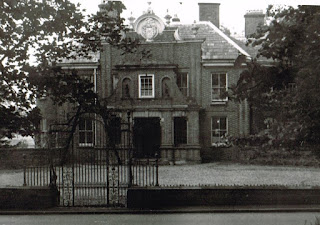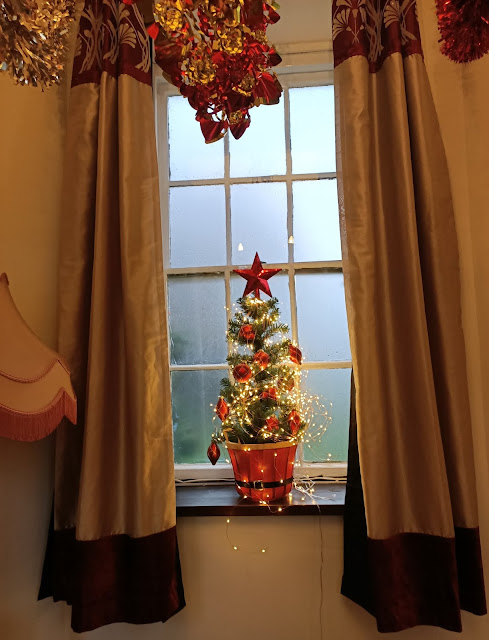So why the Dead Gardeners Society?
 |
| Betley Court from the main road (note the missing railings, taken for the War effort) |
The Professor once pointed out to me
that the problem with old houses is, that when neglected, they fall down. By
contrast, untended gardens grow up and out, making the problem much, much
bigger. It’s a problem we grapple with every day!
Betley Court Gardens are ten acres of
English pleasure grounds, designed in a variety of styles, with different
levels of maintenance afforded them over the years. During the period the house was empty, the last
Squire Charles Fletcher-Twemlow continued to pay for a gardener to mow the
lawns in the formal gardens around the house, so that never got too out of
hand! However, the secluded Romantic
woodland walk around the Dingle was largely left to its own devices and is now
home to a forest of self-sown ‘volunteer’ sycamores. The dam, that creates a pond
at the bottom of the Dingle walk needs repair. We’re not even sure if any work
has been done on it since it was dredged to make a swimming therapy pool in the
second Word War.
So, where to begin? And what to do?
And if you’re going to restore a garden, what are you restoring it to?
We are very lucky. Over the
generations, Craddocks, then the Fletcher-Twemlows sought out some high profile
and fashionable landscape gardeners to help them create their vision of the
perfect English garden. If you go to the archives at the County records Office,
you can even look at some of the designs. It is quite thrilling to paw over the
original drawings, under the watchful eyes of the archivist, to see where a
compass point has pieced the paper to mark the centre of a tree, or the arc of
a path.
Even more excitingly, there are
features on these plans that you can see still in the landscape today. There is
Williams Emes’s naturalistic ‘gardenless’ vista stretching down to Betley Mere.
Overgrown yew topiary, a lowered formal lawn and a magnificent Cedar of Lebanon
planted by the great ‘Tree Mover’ William Barron remain to the south elevation.
And although the walled garden has long since been built over with a housing
estate in the 1980s, the last Head Gardener, Mr Mulliner is remembered in the
stories of village elders.
So, when we’re gardening, we are
gardening along with those long passed gardeners. These Dead Gardeners left us
an interesting legacy, the physical shape of the garden, even some
horticultural treasures. In moving forward with the restoration of the grounds,
we will have to bear this in mind, whilst altering the design to fit today’s
budget, availability of labour and evolving function of the grounds. It’s going
to need a bit of detective work, but it is going to be an exciting journey!


Comments
Post a Comment